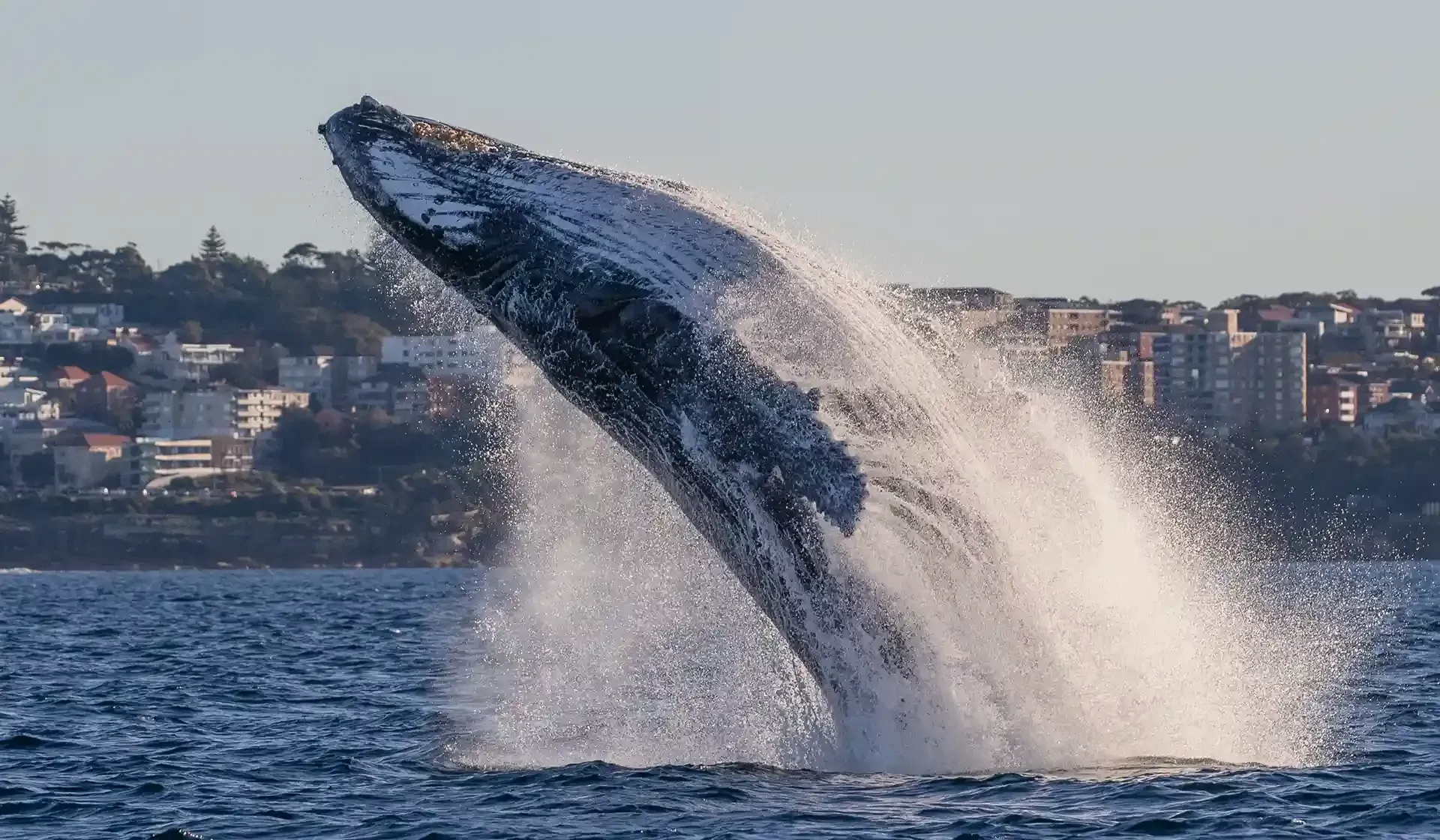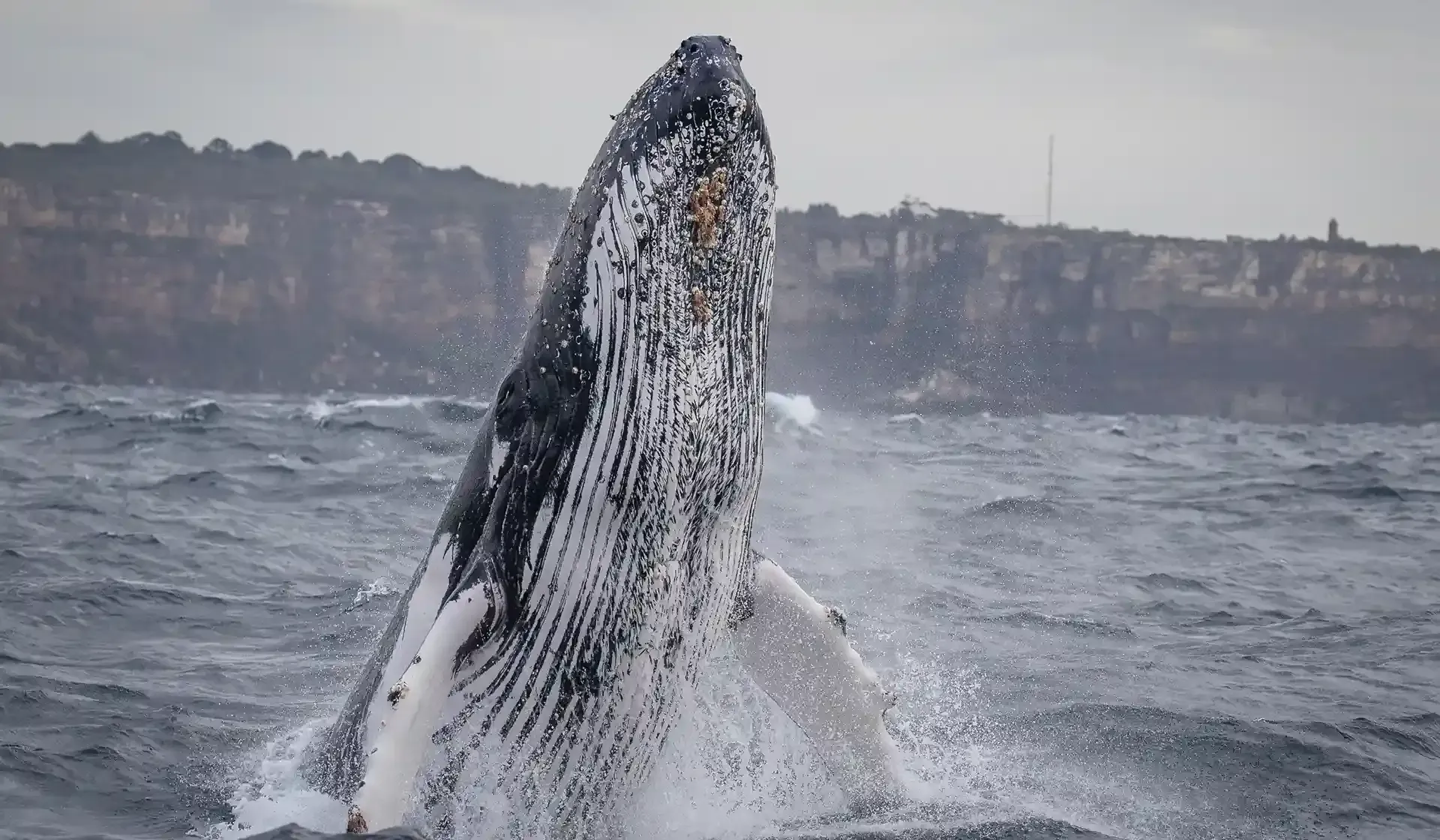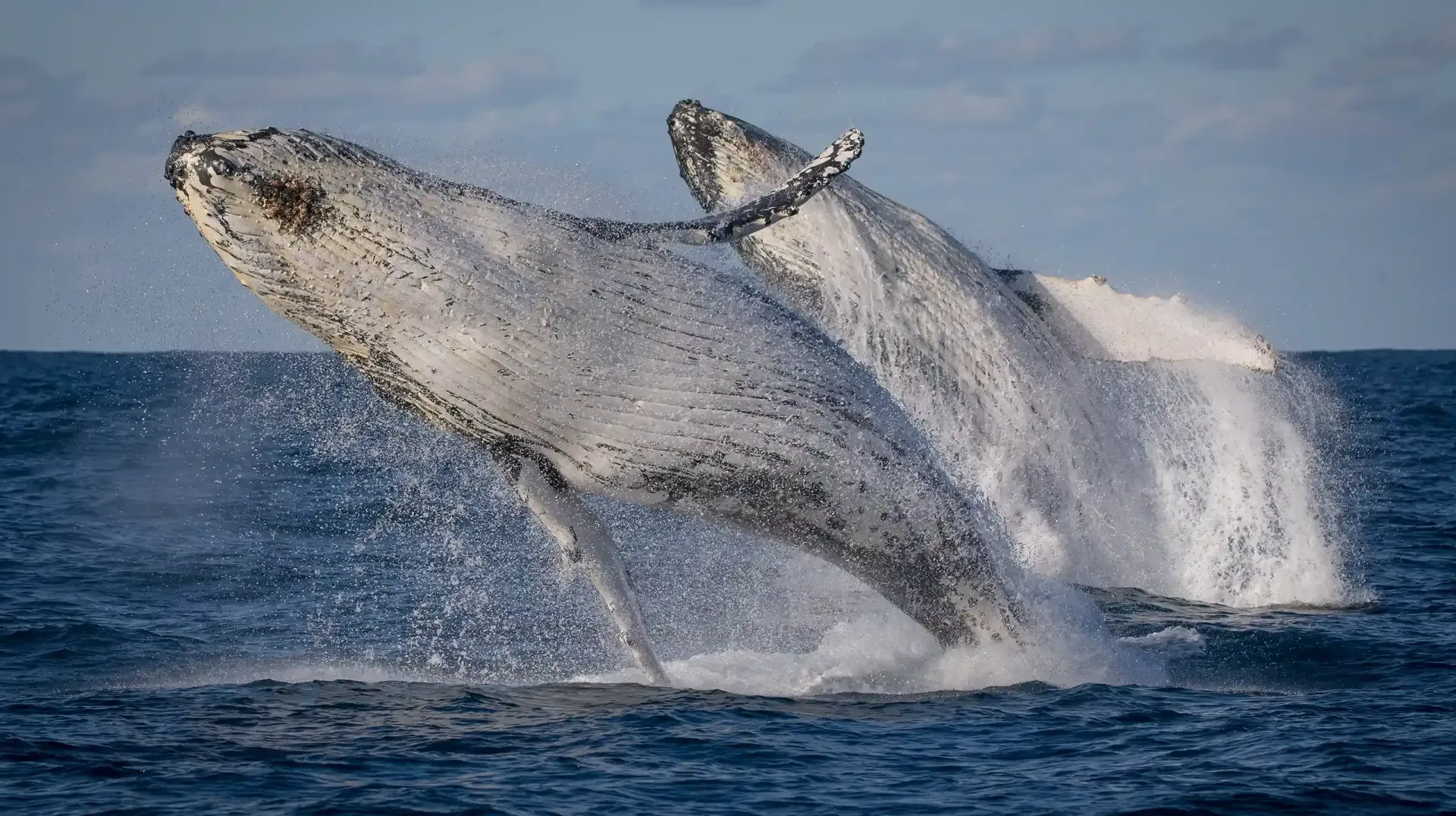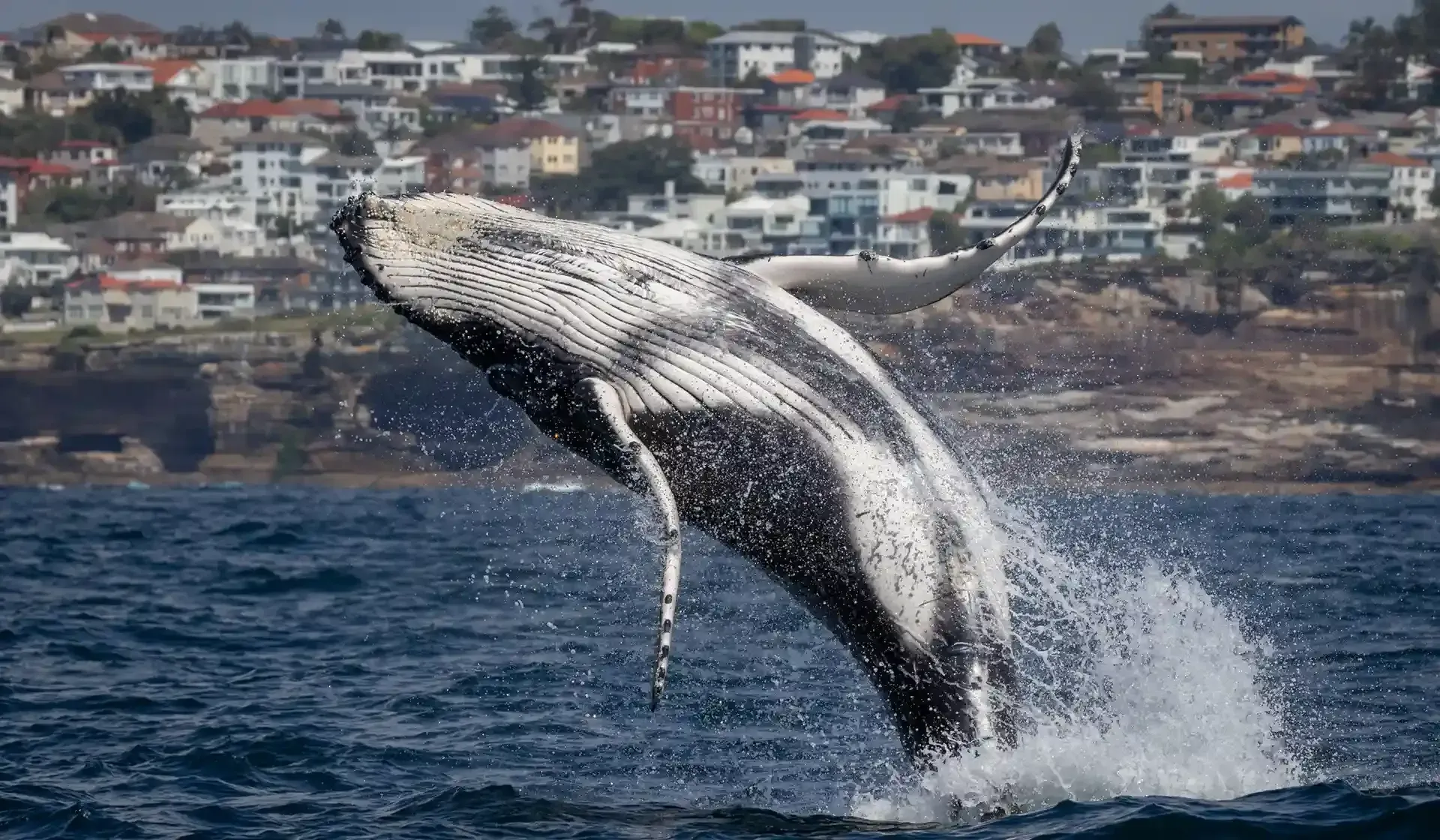Ahoy whale punters,
Captain Simon checking in today to ponder an age-old question – why do whales breach? If you've ever been lucky enough to witness a humpback whale launch itself out of the water like a rocket before crashing back down with an almighty splash, you’ll know it’s one of the most breathtaking sights in the natural world.
Humpback whales are famous for their breaching, and whilst it’s humpback whales best known for their acrobatic displays, other species such as southern right whales and even orcas are also known to breach. Marine scientists have been studying this behaviour for years now, and while we still don’t know for certain why whales breach, there are several widely accepted theories.
Whales are social creatures
One of the leading theories is that breaching is a form of communication. When a humpback whale breaches, the sound of its massive body hitting the water can travel long distances underwater. This could be a way of signalling to other whales, whether to attract a mate, warn off a rival, or simply stay in touch with the rest of the pod. In fact, breaching is more common in social groups, suggesting it plays an important role in whale interactions.


Whale hygiene - removing barnacles and parasites
Just like us, whales like to stay clean! A possible reason for breaching is that it helps whales get rid of parasites. Humpback whales often carry barnacles and other marine hitchhikers on their skin.
By jumping out of the water and landing with force, they may be trying to dislodge these unwanted passengers. Think of it as nature’s way of having a good scratch.
Play time
Whales are highly intelligent and curious creatures, and sometimes, breaching may simply be a sign of playfulness or excitement. Calves, in particular, are often seen breaching repeatedly, seemingly just for the fun of it. It could also be a way for them to practise coordination and build strength for their long migration.
Our record number of whale breaches by a single whale seen on a Sydney cruise is over 100! Although breaching is generally considered more common during the southern migration later in the season, this record was made by a sub-adult during the northern migration in June 2024. It just goes to show, you never know what you’ll see when observing whales in the wild!


Checking the coast is clear
Whales have excellent hearing (check out this great article from the University of Queensland) but limited vision underwater. By leaping into the air, they might be getting a better look at their surroundings, checking for predators like orcas, or navigating their environment.
Or perhaps they’re just checking out the spectacular Sydney Harbour Bridge!
Different types of breaching
Not all breaches look the same. Whales display a range of breaching styles, each with its own unique flair. Some of the most common types include:
- Full breach – This is the most dramatic type, where the whale propels almost its entire body out of the water before twisting or falling back with an enormous splash.
- Partial breach – Sometimes, a whale doesn’t quite clear the surface, with only the upper half of its body emerging before crashing down.
- Head lunge (spy breach) – In this move, the whale pushes its head and upper body out of the water at a steep angle before slamming down forcefully.
- Twisting breach – Some humpbacks add a bit of flair by twisting their bodies mid-air before landing. It’s an incredible sight to see!
- Repeated breaching – Young whales, especially calves, often breach multiple times in quick succession, likely as a way to build strength and coordination.
My personal favourite would have to be a double breach, when two adult humpback whales jump in unison together. It’s a sight to behold!
Experience the magic of breaching in Sydney
Seeing a humpback whale breach is a moment you'll never forget, and Sydney is one of the best places in the world to witness this spectacle. Every year, between May and November, over 40,000 humpback whales migrate along the east coast of Australia, offering whale watchers an unforgettable spectacle.
While breaching is one of the most exciting behaviours to witness, it’s important to remember that whales are wild animals and don’t perform on cue. Some days they are more active than others, and while we often see breaches on our tours, every experience is unique. But whether they’re breaching, tail-slapping, or simply gliding past, seeing these majestic creatures up close is always an awe-inspiring experience. You can learn more about other humpback whale behaviours here.
Join us at Go Whale Watching Sydney and see if you can witness a breaching whale for yourself. No matter what the whales have in store on the day, it’s guaranteed to be a truly unforgettable adventure! Book tickets for the best whale watching in Sydney now.
Anchors aweigh,


